Learn how to make easy Eggs Benedict that are perfectly poached, decadently sauced, and divinely delicious every time with detailed tips, tricks, and video, including make ahead instructions for stress free mornings or entertaining! This recipe boasts the classic creamy, runny yolk that mingles with FOOLPROOF Blender Hollandaise Sauce that takes minutes to whip up or try guilt free Greek Yogurt Hollandaise that readers call, “incredibly tasty!”
Watch How to Make Eggs Benedict


What makes this the BEST Eggs Benedict Recipe

What is Eggs Benedict?
Eggs Benedict is a quintessential brunch dish that embodies indulgence and sophistication in every bite. Picture this: a perfectly poached egg nestled atop a slice of savory Canadian ham, all perched atop a toasted English muffin. But wait, it gets even better! A velvety blanket of rich and creamy hollandaise sauce drapes over the ensemble, infusing each mouthful with a symphony of buttery goodness and tangy zest from the lemon juice. With its harmonious blend of textures and flavors, Eggs Benedict is not just a meal – it’s a culinary delight!


Classic Egg Benedict ingredients
Simple ingredients come together to make extraordinary Eggs Benedict recipe! Let’s take a closer look at what you’ll need (measurements in the printable recipe card at the bottom of the post):
FOR THE Eggs Benedict:
For the Hollandaise Sauce


What are Pasteurized eggs?
Pasteurized eggs should be easy to find at the grocery store for just a little more than traditional eggs. Pasteurization destroys any potential bacteria and viruses so they are completely safe to eat raw. Pasteurized eggs are heated in their shells to the exact temperature needed to help destroy bacteria—without cooking the egg. After pasteurization, the eggs are sealed with an FDA-approved, food-grade wax coating to prevent contamination and preserve product freshness.

How to make Egg Benedict
Let’s take a closer look at how to make Eggs Benedict with step-by-step photos (full recipe in the printable recipe card at the bottom of the post):
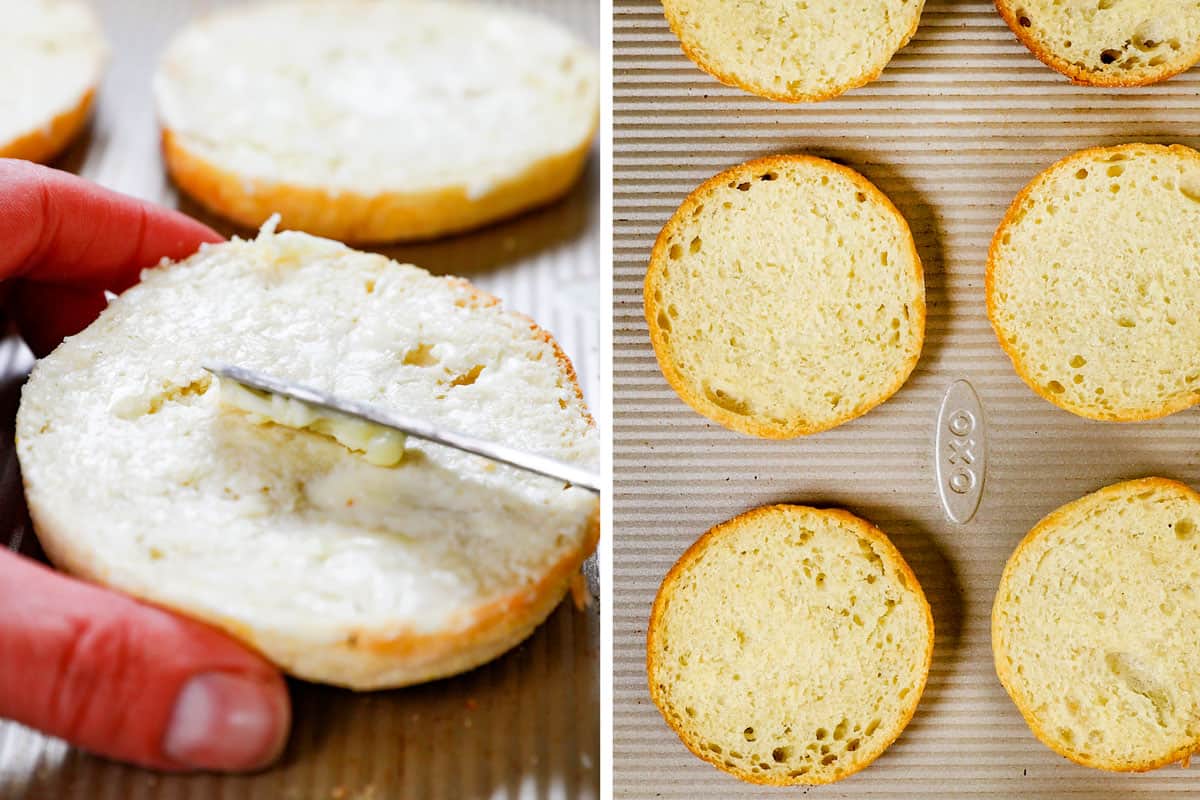
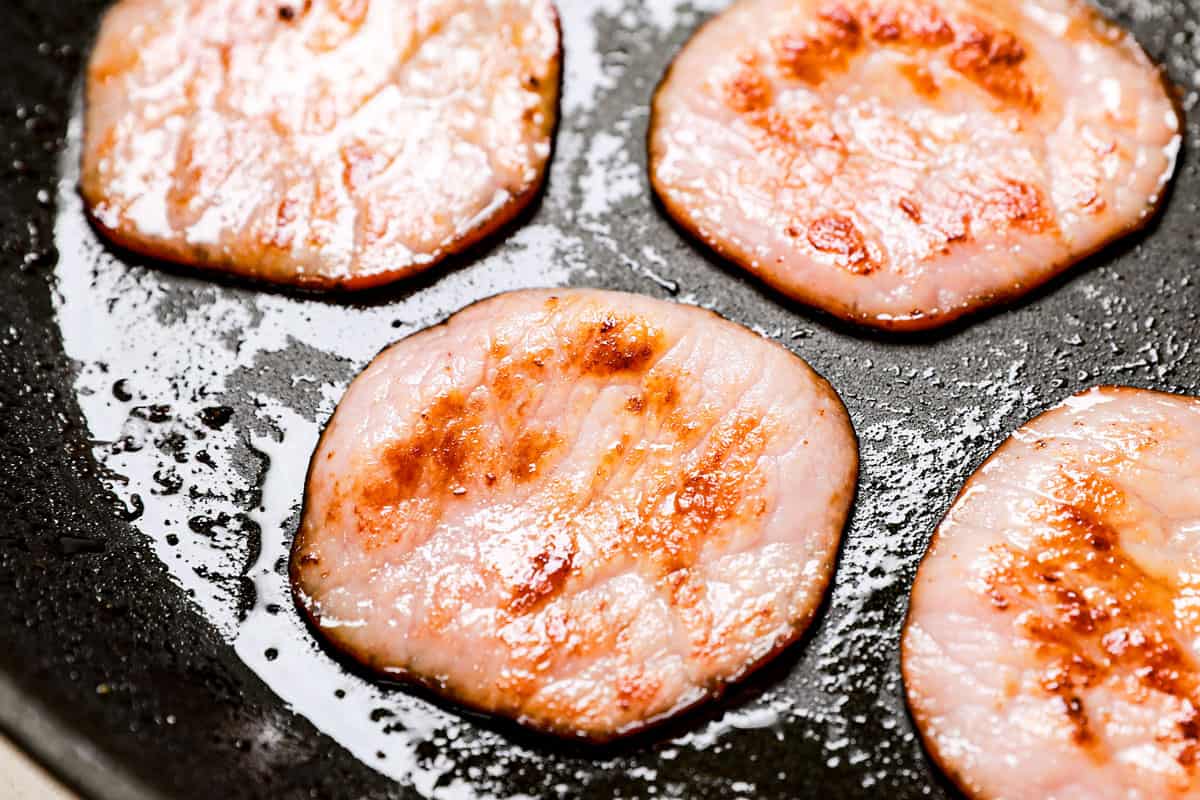
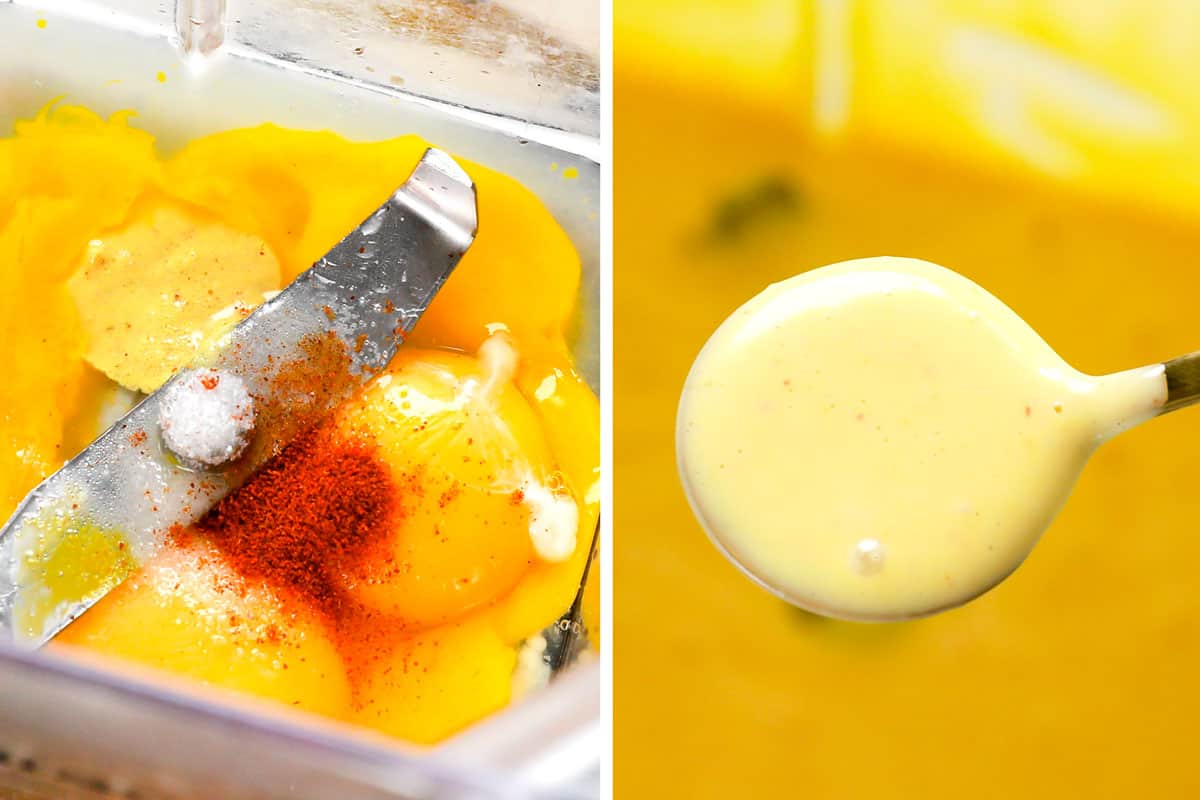

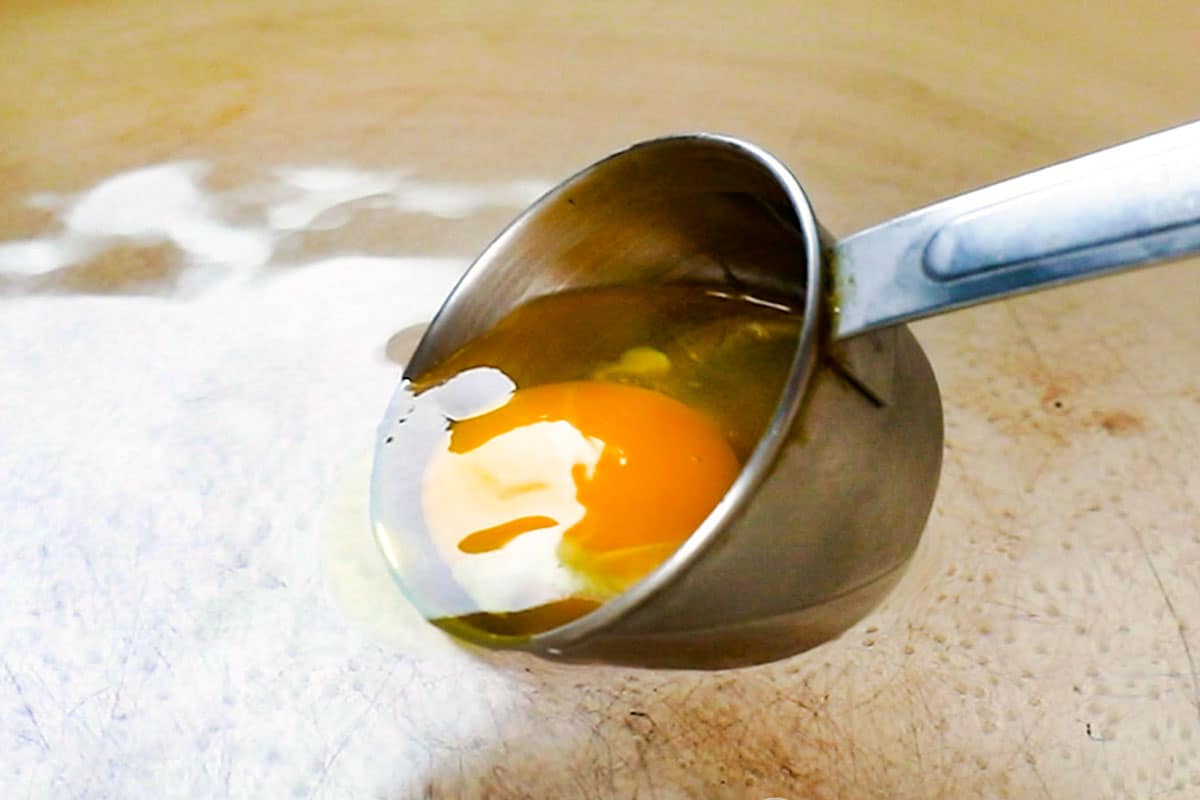
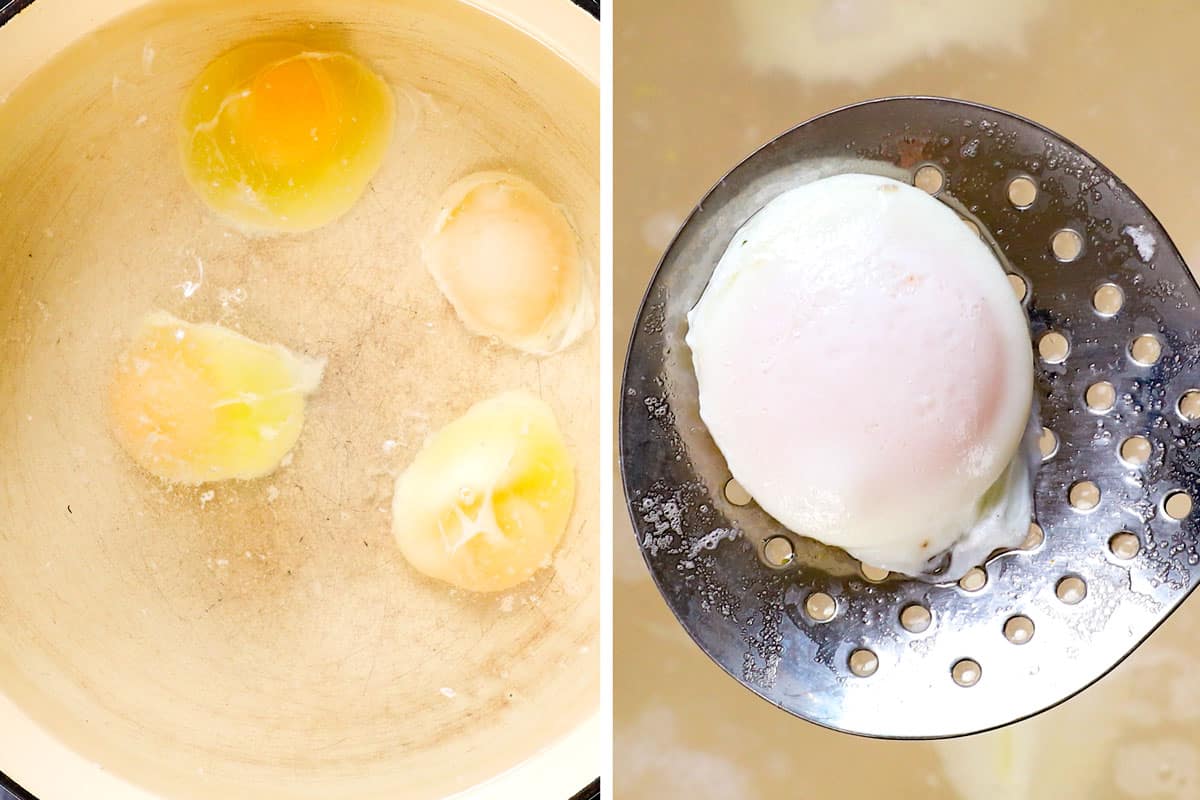


Tips for this Recipe for Eggs Benedict
Follow these tips for eggcellent Eggs Benedict every time!


Classic Eggs Benedict variations
Eggs Benedict offers endless possibilities for delicious variations. Here are some creative twists to try:


How to serve this Traditional Eggs Benedict Recipe

Eggs Benedict Sauce
Hollandaise sauce is a MUST for classic Eggs Benedict! It’s luxuriously creamy, buttery, lemony and so good, it’s one of the five Mother Sauces in French cuisine (despite the Dutch name origin).
Classic Hollandaise Sauce is an emulsified sauce made by whisking lemon juice and butter with egg yolks over a double boiler. Although pretty simple, this method can often curdle or break – but not Blender Hollandaise Sauce! With this simple blender method, you never have to be afraid or intimidated by Hollandaise Sauce again!
I’m not sure where Blender Hollandaise Sauce first originated, but it’s documented in Julia’ Child’s “Mastering the Art of French Cooking” where she describes, “the technique is well within the capabilities of an 8-year-old child.” Now that’s what I’m talking about. Why double boil and whisk and whisk when the blender can do all the work? Once you try this foolproof method, you will never look back!


How to store Classic Egg Benedict
The poached eggs can be refrigerated in a bowl of ice water for up to 2 days. The hollandaise sauce can be stored in an airtight container for up to 2 days. Follow the instructions below for reheating or making ahead for a large group.

How to reheat eggs benedict recipe
TO WARM POACHED EGGS:
Bring a large pot of water to a boil, turn down to low, then add all the eggs and leave for 30 seconds. Remove with a strainer and assemble immediately.
TO WARM HOLLANDAISE, you have a 3 options:
1. Reheat in Microwave: Add Hollandaise Sauce to a microwave safe bowl. Microwave Sauce at 50% power in 15-second increments just until warm – BUT NOT HOT, whisking in between increments. Be gentle and not aggressive – you don’t want the eggs to scramble! If the sauce is too thick, whisk in warm water a teaspoon at a time until it reaches desired consistency.
2. Reheat in Double Boiler: Place Hollandaise in the top pan of a double boiler or in a bowl set over a saucepan of simmering water and heat just until warm, stirring often. If the sauce is too thick, whisk in warm water a teaspoon at a time until it reaches desired consistency.
3. Reheat in Warm Water: Place the heatproof airtight container in large bowl of very warm (not scalding hot) water. You may need to place something on top to weigh it down so it doesn’t float. Leave for 20 minutes, stir, then reheat the water or replace the water as needed until warmed through. If the sauce is too thick, whisk in warm water a teaspoon at a time until it reaches desired consistency.

Make ahead eggs benedict
Poached eggs: The eggs can be poached, then immediately transferred to a bowl or ice water to stop them from cooking. Store in the water just until all eggs are poached and you’re ready to serve at once, or in the refrigerator for up to 2 days. If serving immediately, transfer the eggs back to the hot water for 30 seconds to reheat. If the eggs have been refrigerated, bring a large pot of water to a boil, turn down to low, then add all the eggs and leave for 30 seconds. Remove with a strainer and assemble immediately.
Hollandaise sauce: Make the sauce per instructions, then either store in an airtight container in the refrigerator for up to 2 days or keep warm in a an insulated gravy jug like this, in a gravy warmer, or by placing the blender directly in hot water (not scalding hot) and replacing or warming the water as needed. If refrigerating, reheat per instructions above.
Egg Benedict Recipe FAQs
Eggs Benedict contains poached eggs, but is more than just poached eggs. Poached eggs are eggs that have been gently cooked in simmering water until the whites are set but the yolks remain runny. They can be served on their own or as part of various dishes. Eggs Benedict, on the other hand, is a specific dish that features poached eggs served atop toasted English muffins, Canadian bacon or ham, and topped with hollandaise sauce. The combination of these elements creates a rich and indulgent brunch classic that is distinct from a plain poached egg.
The secret to Eggs Benedict is to poach the eggs correctly to achieve the harmonious balance of textures and flavors. The delicate, firm white exterior of the egg should give into a creamy, runny yolk when pierced, mingling with the buttery hollandaise sauce for a decadent and indulgent brunch experience.
Yes, Eggs Benedict traditionally features poached eggs with a runny yolk for several reasons. Firstly, the creamy, velvety texture of the runny yolk adds richness and indulgence to each bite, complementing the other components of the dish. Additionally, the warm, liquid yolk serves as a natural sauce when combined with the hollandaise sauce, enhancing the overall flavor and creaminess of the dish. Finally, the contrast between the soft yolk and the firmer egg white creates a pleasing textural experience that elevates Eggs Benedict from a simple breakfast to a luxurious culinary treat.
The origin of the name “Eggs Benedict” is somewhat disputed, but one popular theory attributes it to Lemuel Benedict, a retired Wall Street stockbroker. According to legend, Benedict walked into the Waldorf Hotel in New York City in 1894 and ordered “buttered toast, poached eggs, crisp bacon, and a hooker of hollandaise.” The maître d’hôtel, Oscar Tschirky, was so impressed by the combination that he put it on the hotel’s menu, replacing the toast with an English muffin and the bacon with ham, and named it after Benedict himself. Another theory suggests that the dish was named after Pope Benedict XIII, who was known for his love of eggs. Regardless of its precise origins, Eggs Benedict has since become a beloved classic in American breakfast and brunch cuisine.
The main difference between Eggs Benedict and eggs royale lies in their choice of protein. Eggs Benedict traditionally features Canadian bacon or ham as the protein component, while eggs royale substitutes smoked salmon (also known as lox) for the meat. Otherwise, both dishes share similar components, including poached eggs, toasted English muffins, and hollandaise sauce.
Hollandaise sauce has a rich, creamy, and buttery flavor with a subtle tanginess from the addition of lemon juice. It has a smooth and velvety texture, making it luxurious and indulgent. The sauce is often seasoned with a hint of salt and cayenne pepper, adding depth and a subtle kick to its flavor profile. Overall, Hollandaise sauce is decadent, savory, and slightly acidic, making it the perfect complement to dishes like Eggs Benedict, vegetables, or seafood.
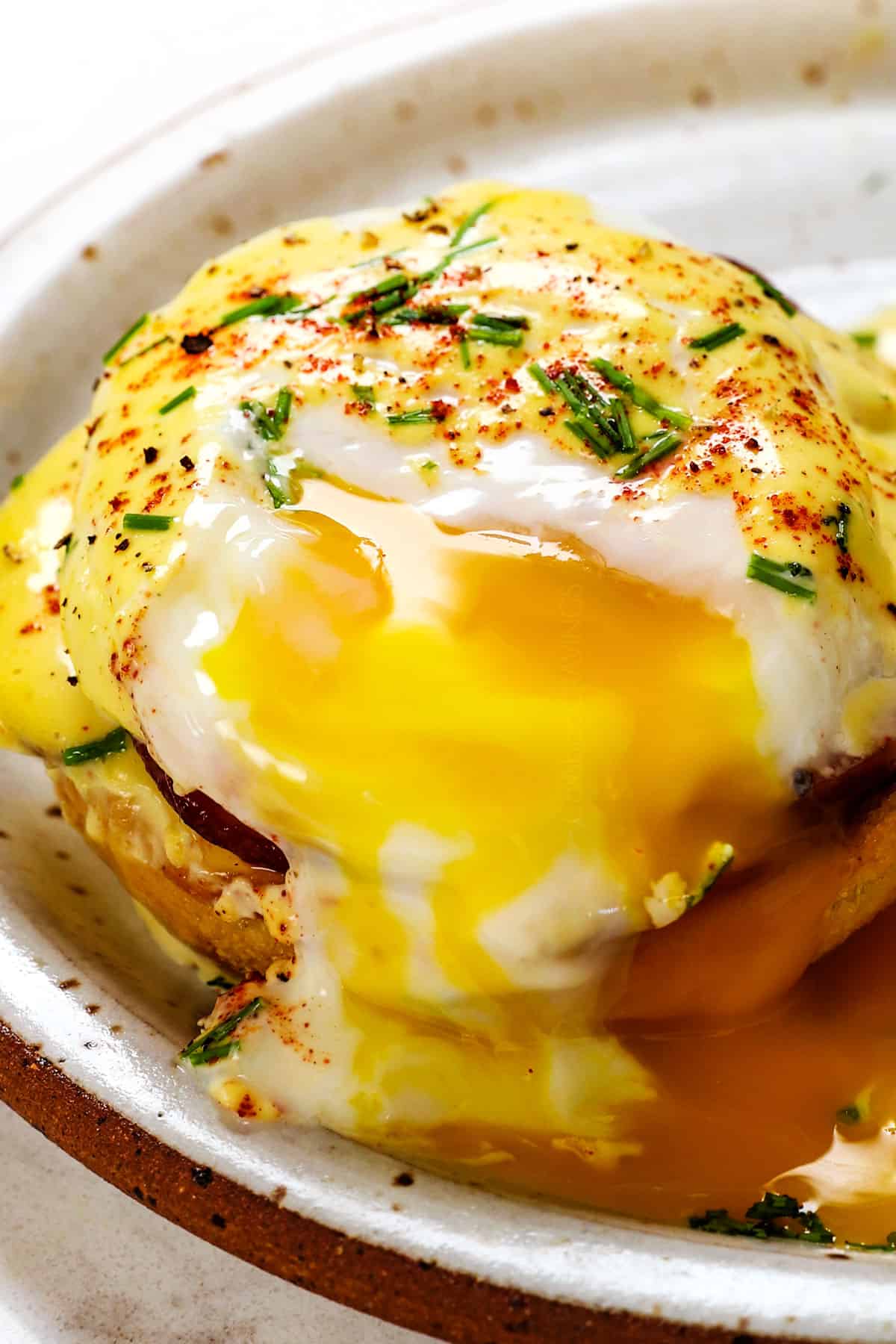

Looking for more Savory breakfast Recipes?
Eggs Benedict Casserole
Eggs Shakshuka
Huevos Rancheros
Breakfast Burritos
Breakfast Sandwiches
Quiche Lorraine
Frittata
Deviled Eggs
WANT TO TRY THIS RECIPE?
PIN IT to your recipe BOARD TO SAVE FOR LATER!
FIND ME ON PINTEREST FOR MORE GREAT RECIPES! I AM ALWAYS PINNING :)!
©Carlsbad Cravings by CarlsbadCravings.com

Traditional Eggs Benedict Recipe
Save This Recipe To Your Recipe Box
You can now create an account on our site and save your favorite recipes all in one place!
Ingredients
- 1 recipe Blender Hollandaise Sauce OR
- 1 recipe Healthy Hollandaise Sauce
- 2 English muffins, halved
- 1 tablespoon butter softened
- 8 slices Canadian bacon (2 per muffin)
- 4 large eggs
- 2 tablespoons distilled white vinegar
- Paprika and freshly cracked pepper to garnish
- Chives and/or fresh dill to garnish
Instructions
Muffins & Bacon
- Toast English Muffins: Preheat oven to 375°F. Butter cut side of English muffins with desired amount of butter. Bake on a baking sheet until golden and crispy around the edges, about 10-12 minutes. Meanwhile:
- Crisp meat: Heat a drizzle of olive oil in a large skillet over medium-high heat. Add Canadian bacon and cook each side until lightly browned and crispy on the edges, 1-2 minutes per side. Transfer to a plate and cover to keep warm.
- Boil Water for Poached Eggs: Fill a large Dutch oven with 3-4 inches of water. Bring to a boil over high heat. Once water is barely boiling, turn the heat down so there aren’t any big bubbles breaking on the water's surface, only a few tiny bubbles being sent up from the bottom (see video). Stir in the vinegar. Meanwhile:
Hollandaise Sauce
- Keep warm: Keep warm until ready to serve by placing the blender in a pot of warm water, storing in an insulated gravy jug like this or in a gravy warmer. If it’s too thick before serving, whisk in hot water, 1 teaspoon at a time.
Partially Assemble:
- Before poaching the eggs, place English muffins halves on a plate(s) cut side up. Top each muffin with 2 slices Canadian bacon.
TO POACH EGGS
- Crack Eggs: Crack an egg into a fine mesh sieve over a bowl. Let drain for 20 seconds, then add to a measuring cup or teacups (something short with a handle). Repeat with 3 more eggs, adding to separate cups. Draining eggs removes watery whites which cause unruly wisps.
- Roll Out Eggs: Submerge a cup into the water and gently roll the egg out. Repeat with 3 prepared eggs in a clockwise pattern around the pot so you know which ones to take out first.
- Poach Eggs: Set a timer and cook for 3 minutes. Using a slotted spoon, lift the first egg out and check for doneness – the whites should be soft but set, yolks should be runny. If not set, let cook another 30-60 seconds.
- Shock in Ice Water (Optional): If not serving immediately or cooking more than 4 at a time, shock the poached eggs in a bowl of ice water to stop the cooking process. Reheat them in warm water for 20 seconds or so just before serving.
To ASSEMBLE
- Top each prepared muffin with one poached egg, then desired amount of hollandaise sauce. Sprinkle with paprika, herbs and freshly cracked pepper. Serve immediately!
Video
Notes
MAKE AHEAD
- To Store Poached Eggs: Poach the eggs, then immediately transfer to a bowl or ice water to stop them from cooking. You can store in the ice water just while your poach more eggs or store in the ice water in the refrigerator for up to 2 days.
- To Reheat Poached Eggs: If the eggs have just been in the ice water while poaching more eggs, then transfer the eggs back to the hot water for 30 seconds to reheat. If the eggs have been refrigerated, bring a large pot of water to a boil, turn down to low, then add all the eggs and leave for 30 seconds. Remove with a strainer and assemble immediately.
- Hollandaise sauce: Store in an airtight container in the refrigerator for up to 2 days.
- Reheat in Microwave: Add Hollandaise Sauce to a microwave safe bowl. Microwave Sauce at 50% power in 15-second increments just until warm – BUT NOT HOT, whisking in between increments. Be gentle and not aggressive – you don’t want the eggs to scramble! If the sauce is too thick, whisk in warm water a teaspoon at a time until it reaches desired consistency.
- Reheat in Double Boiler: Place Hollandaise in the top pan of a double boiler or in a bowl set over a saucepan of simmering water and heat just until warm, stirring often. If the sauce is too thick, whisk in warm water a teaspoon at a time until it reaches desired consistency.
- Reheat in Warm Water: Place the heatproof airtight container in large bowl of very warm (not scalding hot) water. You may need to place something on top to weigh it down so it doesn’t float. Leave for 20 minutes, stir, then reheat the water or replace the water as needed until warmed through. If the sauce is too thick, whisk in warm water a teaspoon at a time until it reaches desired consistency.

Did You Make This Recipe?
Tag @CarlsbadCravings and Use #CarlsbadCravngs
Leave a Review, I Always Love Hearing From You!
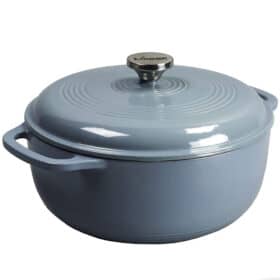
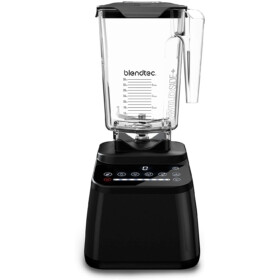
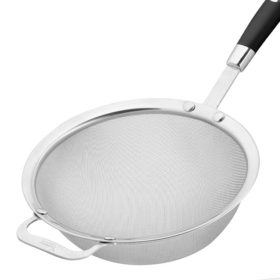
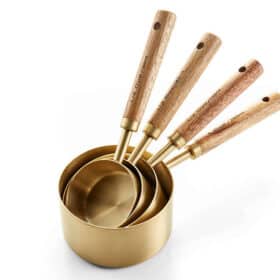

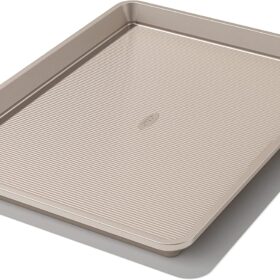

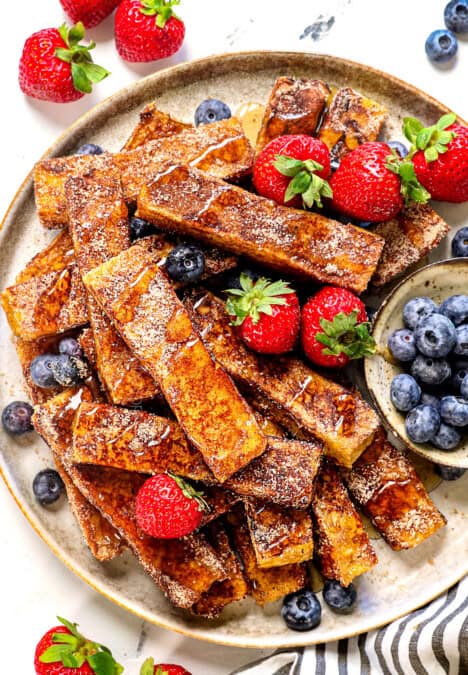
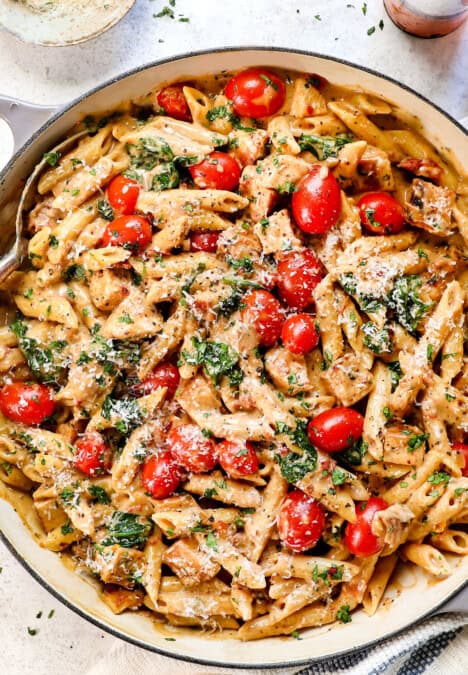

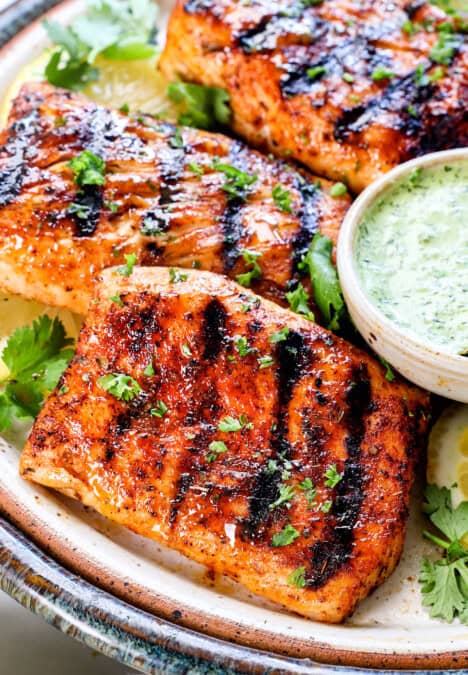
























leave a review